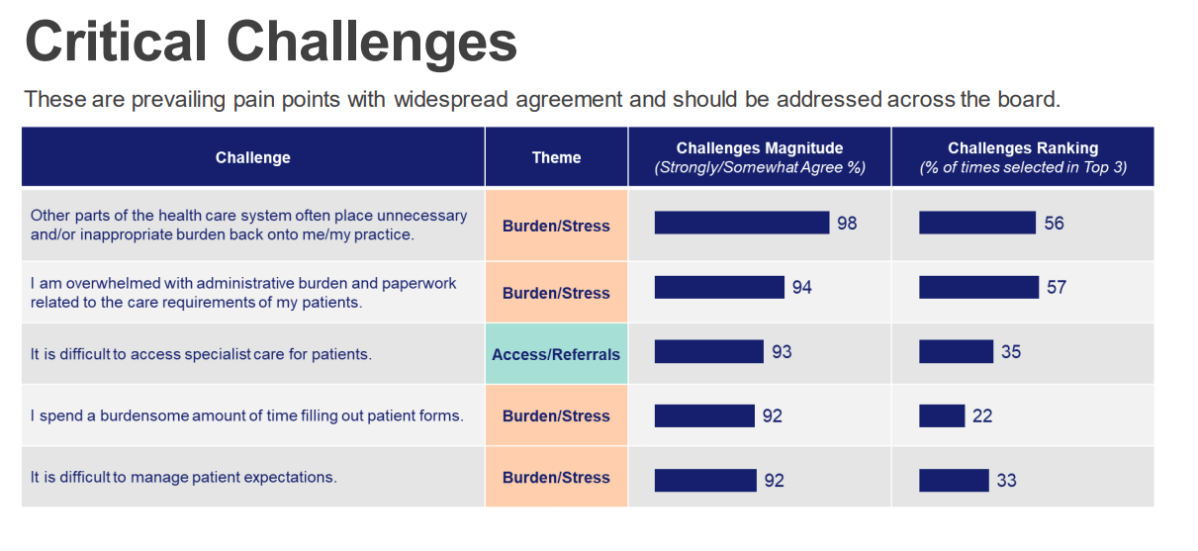The number of Londoners without a family doctor is rising due to a widespread shortage.

New data released today by the Ontario College of Family Physicians (OCFP) estimates there are currently 84,000 residents that do not have a family doctor in the London region. There are 2.3 million Ontarians in this position.
The OCFP estimates that these numbers will nearly double if the shortage isn’t addressed, with 163,077 without a family doctor in London and Middlesex, and 4.4 million people across the rest of the province.
“I get asked if I’m accepting new patients, almost everywhere I go,” says Dr. Eric Wong, board member of the OCFP and family doctor in London. “Some staff who work at these places also asked me if I’m taking on patients. So, it is really a difficult situation out there for many of our fellow Ontarians.”
Dr. Wong says part of the problem comes from inadequate health-care teams to support the family doctor in their duties, which often leads to additional responsibilities placed on the doctor.
“Having more family doctors means less hospitalizations for people with chronic disease. We reduce the number of deaths, and we keep people healthy,” says Wong. “If we don’t have enough family doctors in the system to help our patients, more Ontarians will get sicker and cost the system more money in the long run.”
A common issue many doctors are facing is nearly 20 hours a week of administrative duty like filling out employer-mandated sick notes, which takes away from time they can spend face-to-face with their patients. Lack of team support and compensation for their work has not kept pace with inflation, which acts as a deterrent for family doctors to continue their practice.
Data shows that nearly 75 per cent of patients across Ontario do not have access to a family doctor who is supported by a team. In London, only 27 per cent of residents have a family doctor who works on a team.
“I think every minute back that we can get from not doing administrative tasks, we can look after our patients better,” says Wong. “Some patients may need more time with us in an appointment, we can afford that.”
There are several other factors that contribute to the shortage, including challenges in retaining doctors. In a survey conducted on behalf of the OCFP, data showed that 65 per cent of family doctors plan to leave or change their practice in the next five years. Many family doctors are also expected to retire, and new graduates do not meet the demands by patients.
The data also shows a clear downward trend in family doctors choosing to work in comprehensive medicine, from cradle to grave.
“Some patients may present with issues that do not require the time and work of a family physician and another healthcare provider (on the team) can provide a service,” says Wong. “Then it frees up time for family doctors to look after more patients.”
The OCFP is urging the Ford government to increase their investments in healthcare to support family physicians and in turn reduce the strain on emergency rooms and hospital services. They are calling for urgent supports to help family doctors and their patients.
“We are hearing from our emergency room, physicians, colleagues and our specialists telling us that they are seeing a lot more patients who have what we call unmanaged illnesses, which usually refers to patients who have chronic diseases and don’t have access to a family doctor,” says Wong. “These diseases continue to prove they get worse, to a point where they have to visit the emergency room. And we really would like to turn this around.”
Hannah Jensen, spokesperson for the Ministry of Health, says Ontario is leading the country with 90 per cent of Ontarians having a primary care provider. The provincial government has also created several programs that allow more family doctors to start their practice, such as the Practice Ready Ontario program, which will add 50 new physicians by the end of 2024, she said.
“We are investing $110 million, triple the original amount set out in our 2023 and 2024 budget to create and expand 78 primary care teams, that will ensure 98 per cent of Ontarians are connected to a primary care provider over the next several years,” says Jensen.
Since 2018, over 10,400 new physicians have been employed in the province, Jensen said, including a nearly 10 per cent increase in family physicians. She said the provincial government launched “the largest medical school expansion” across Ontario in 15 years, adding “hundreds of undergraduate and medical seats across the province, with 60 per cent of seats specifically for family medicine,” including at Western University in London.
“Our government has also launched an initiative called Patients Before Paperwork (PB4P) to further tackle the administrative burden on physicians while reducing the risk of delays in diagnosis and treatment,” said Jensen.
However, the OCFP aims to expand on this support through means such as eliminating employer-mandated sick notes, increasing team support or family physicians, and ensuring fair compensation.








Comments